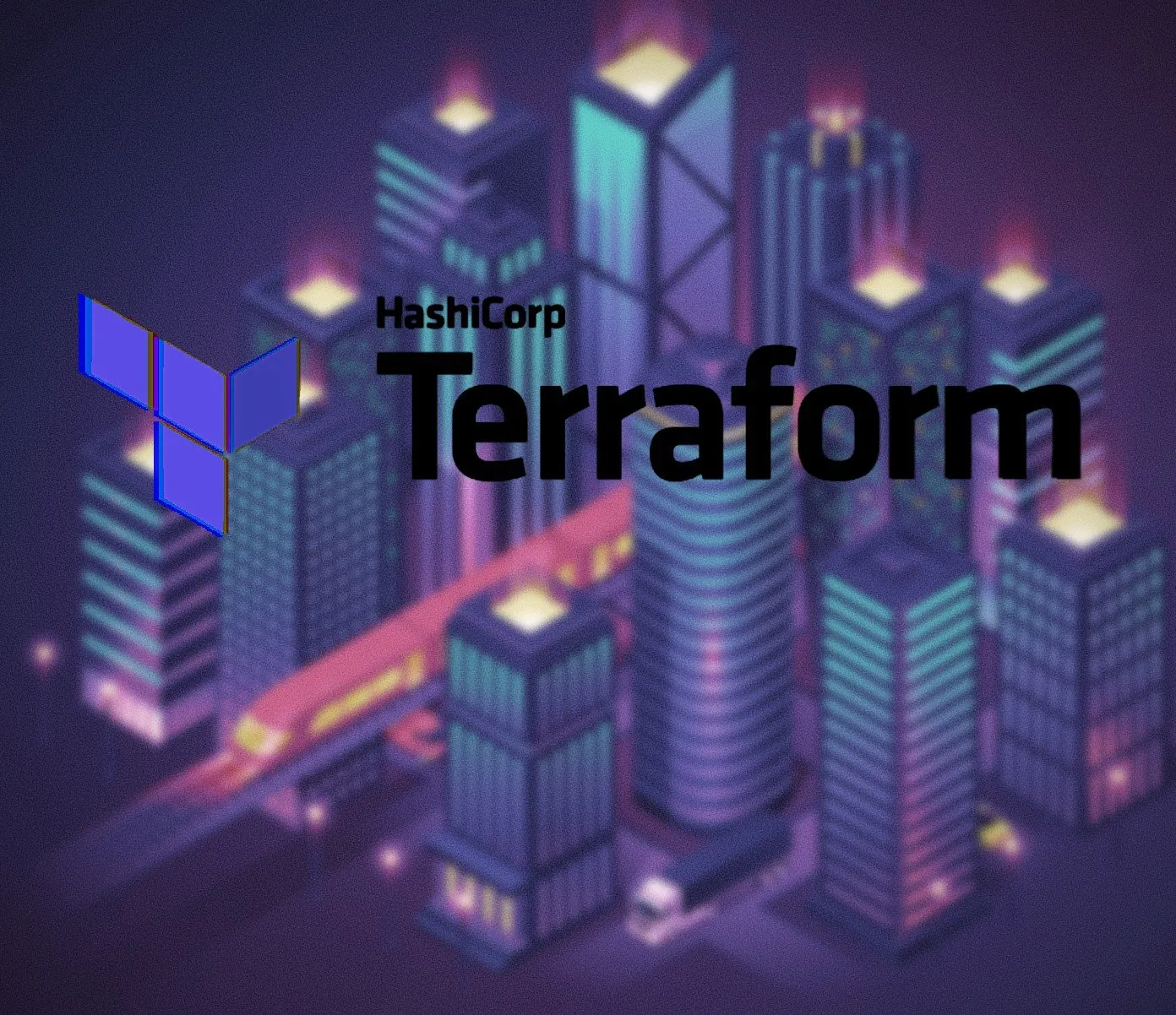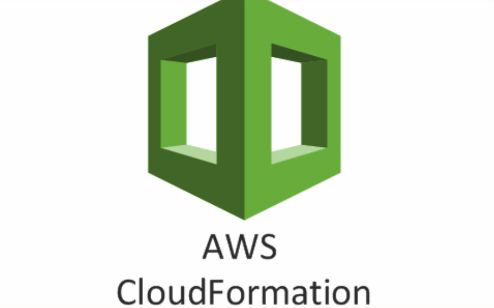
 Using Bicep, we can deploy Azure Container Apps quickly and easily!
Using Bicep, we can deploy Azure Container Apps quickly and easily!
 The Cloud has become a familiar feature of the tech stacks at most organizations and is becoming much more than a place for server resources. At present, almost everything in our digital landscape is connected to a Cloud in one way or another.
The Cloud has become a familiar feature of the tech stacks at most organizations and is becoming much more than a place for server resources. At present, almost everything in our digital landscape is connected to a Cloud in one way or another.
 Learn how to rename an AWS S3 bucket in Terraform. See renaming process of Amazon s3 bucket in a few simple steps.
Learn how to rename an AWS S3 bucket in Terraform. See renaming process of Amazon s3 bucket in a few simple steps.
 How changing the development mindset to a product-led-growth one can improve the user experience by focusing the thought process for the team's members.
How changing the development mindset to a product-led-growth one can improve the user experience by focusing the thought process for the team's members.
 Get started creating IaC using CloudFormation templates.
Get started creating IaC using CloudFormation templates.
 Infrastructure-as-code is a very important concept to understand in the DevOps world today.
Infrastructure-as-code is a very important concept to understand in the DevOps world today.
 In this blog post, you'll learn about why you should be testing IaC and the best platforms to get started with.
In this blog post, you'll learn about why you should be testing IaC and the best platforms to get started with.
 Dive into the new year’s top cloud and infra-tech trends, straight from a cloud and infrastructure technology fanatic.
Dive into the new year’s top cloud and infra-tech trends, straight from a cloud and infrastructure technology fanatic.
 A phenomenon we have encountered often, when helping companies overcome drift, is a common neglect of the entire SaaS toolchain. Learn why this is troubling.
A phenomenon we have encountered often, when helping companies overcome drift, is a common neglect of the entire SaaS toolchain. Learn why this is troubling.
 The Idea
The Idea
 Documenting IT networking lab procedures in code rather than word-processor documents enables more authentic, equitable and consistent assessment.
Documenting IT networking lab procedures in code rather than word-processor documents enables more authentic, equitable and consistent assessment.
 Use TypeScript in all your projects and all use cases without any limitation. You can now do frontend, backend, infrastructure and machine learning in one progr
Use TypeScript in all your projects and all use cases without any limitation. You can now do frontend, backend, infrastructure and machine learning in one progr
 When talking about infrastructure drift, you often get knowing glances and heated answers. Recording gaps in your infra between what you expected to be and the reality of what is, is a well known and widespread issue bothering hundreds of DevOps teams around the globe.
When talking about infrastructure drift, you often get knowing glances and heated answers. Recording gaps in your infra between what you expected to be and the reality of what is, is a well known and widespread issue bothering hundreds of DevOps teams around the globe.
 Infrastructure as code (IaC) is one of the most important trends in modern IT development. Read about the benefits of IaC and how to implement it.
Infrastructure as code (IaC) is one of the most important trends in modern IT development. Read about the benefits of IaC and how to implement it.
 Have a multi-cloud infrastructure? These free Terraform tools will help you to reduce costs and make your multi-cloud efficient.
Have a multi-cloud infrastructure? These free Terraform tools will help you to reduce costs and make your multi-cloud efficient.
 Infrastructure as Code (IaC) is the process of managing and configuring an infrastructure using configuration files, rather than manually editing configurations
Infrastructure as Code (IaC) is the process of managing and configuring an infrastructure using configuration files, rather than manually editing configurations
 In this article, I'll share our journey at ANNA Money from using our Kubernetes installation in GCP to the managed Kubernetes service by Google and GKE.
In this article, I'll share our journey at ANNA Money from using our Kubernetes installation in GCP to the managed Kubernetes service by Google and GKE.
 This post will share our experience in adopting infrastructure as code (IaC) to manage GitHub organization resources.
This post will share our experience in adopting infrastructure as code (IaC) to manage GitHub organization resources.
 “The advantage of feature branching is that each developer can work on their own feature and be isolated from changes going on elsewhere.” (FeatureBranch)
“The advantage of feature branching is that each developer can work on their own feature and be isolated from changes going on elsewhere.” (FeatureBranch)
 Most often, there is no point in implementing an in-house solution as the cost and effort of building and maintaining it may exceed its potential benefits.
Most often, there is no point in implementing an in-house solution as the cost and effort of building and maintaining it may exceed its potential benefits.
 When your app is experiencing high traffic or utilization, you need to scale your service to handle that load. We’ll explore three ways to scale your apps.
When your app is experiencing high traffic or utilization, you need to scale your service to handle that load. We’ll explore three ways to scale your apps.
 This hands-on tutorial will teach you how to create infrastructure via the AWS Application Composer Console.
This hands-on tutorial will teach you how to create infrastructure via the AWS Application Composer Console.
 So what is Infrastructure-as-Code (IaC) anyway? IaC is a process that automates the provisioning and management of cloud resources.
So what is Infrastructure-as-Code (IaC) anyway? IaC is a process that automates the provisioning and management of cloud resources.

 We recently released the first versions of driftctl, a new open-source project for infrastructure developers, DevOps, SRE, and cloud practitioners, with the goal of helping manage all kinds of drifts.
We recently released the first versions of driftctl, a new open-source project for infrastructure developers, DevOps, SRE, and cloud practitioners, with the goal of helping manage all kinds of drifts.
 If you are familiar with Docker, Terraform, and the CI platforms (eg: Jenkins, CircleCI, Codeship), you already know the power of Declarative DevOps. It can make development easier by being repeatable, predictable, and fast. Supporting technologies both hide complexities and offer important reuse by supporting simple structured syntax in an easy to create and read file. Each technology has codified much of its domain allowing developers to author and instrument with nothing more than a text editor.
If you are familiar with Docker, Terraform, and the CI platforms (eg: Jenkins, CircleCI, Codeship), you already know the power of Declarative DevOps. It can make development easier by being repeatable, predictable, and fast. Supporting technologies both hide complexities and offer important reuse by supporting simple structured syntax in an easy to create and read file. Each technology has codified much of its domain allowing developers to author and instrument with nothing more than a text editor.
 This is true for the most part, but Serverless apps also have a certain property that can make their deployment and maintenance time consuming.
This is true for the most part, but Serverless apps also have a certain property that can make their deployment and maintenance time consuming.
 Terraform is a powerful tool to have in your toolset.
Terraform is a powerful tool to have in your toolset.
 Whether you love it or hate it, Helm is a ubiquitous tool for managing Kubernetes applications. You can use it in many different ways which is great, but can also be overwhelming.
Whether you love it or hate it, Helm is a ubiquitous tool for managing Kubernetes applications. You can use it in many different ways which is great, but can also be overwhelming.
 What is Terraform?
What is Terraform?
 The more I use Bicep, the more I love it. This is what ARM Templates should have been.
The more I use Bicep, the more I love it. This is what ARM Templates should have been.
 As you may have seen, we just launched our public beta of env0 last month. As part of the run-up to the launch, our dev team had to go through and make sure everything about our infrastructure was ready for ongoing public use: one element being creating a maintenance mode for both our Application and our public API.
As you may have seen, we just launched our public beta of env0 last month. As part of the run-up to the launch, our dev team had to go through and make sure everything about our infrastructure was ready for ongoing public use: one element being creating a maintenance mode for both our Application and our public API.
 You might have read our beta launch blog post, which describes how Infrastructure as Code (IaC) is driving the third datacenter revolution (the first two being virtualization and the move to public clouds). In this post, I want to go deeper into looking at how IaC is driving a new need and approach to cost visibility and management.
You might have read our beta launch blog post, which describes how Infrastructure as Code (IaC) is driving the third datacenter revolution (the first two being virtualization and the move to public clouds). In this post, I want to go deeper into looking at how IaC is driving a new need and approach to cost visibility and management.
 I recently worked on implementing CloudFront for s3 bucket files. Most of the tutorials were doing that using console management(UI) but we at Blue Sky Analytics prefer “code as infrastructure”. So I had to do this using CloudFormation. With the help of a few StackOverflow links and tutorials, I was able to write CloudFormation Template.
I recently worked on implementing CloudFront for s3 bucket files. Most of the tutorials were doing that using console management(UI) but we at Blue Sky Analytics prefer “code as infrastructure”. So I had to do this using CloudFormation. With the help of a few StackOverflow links and tutorials, I was able to write CloudFormation Template.
 Terraform is a fantastic tool for managing your cloud infrastructure, especially if your assets are hosted on multiple cloud providers.
Terraform is a fantastic tool for managing your cloud infrastructure, especially if your assets are hosted on multiple cloud providers.
 An overview of the main trends that have pushed the Cloud industry — and the world — forward, in the past decade and a half.
An overview of the main trends that have pushed the Cloud industry — and the world — forward, in the past decade and a half.
 AWS EKS + Terraform + Cloudskiff do the job
AWS EKS + Terraform + Cloudskiff do the job
 This article explains how to set up static code analysis for infrastructure as code using Azure DevOps pipelines.
This article explains how to set up static code analysis for infrastructure as code using Azure DevOps pipelines.
 Cloud-native has been the talk of the town for quite some time now. Some developers think it’s just hyped way too much and will soon diminish from the limelight. Others think cloud-native will revolutionize software development and is here to stay!
Cloud-native has been the talk of the town for quite some time now. Some developers think it’s just hyped way too much and will soon diminish from the limelight. Others think cloud-native will revolutionize software development and is here to stay!
 Join us in the journey of learning Terraform. This blog series aims to provides a guidance for essentials to be known while working with Terraform.
Join us in the journey of learning Terraform. This blog series aims to provides a guidance for essentials to be known while working with Terraform.
 Presents a relatively new concept of Infrastructure from Code (IfC) as the next logical step in cloud automation
Presents a relatively new concept of Infrastructure from Code (IfC) as the next logical step in cloud automation
 The AWS CDK is a software development framework to define cloud infrastructure as code and provision it through CloudFormation. The CDK integrates fully with AWS services and allows developers to use high-level construct to define cloud infrastructure in code.
The AWS CDK is a software development framework to define cloud infrastructure as code and provision it through CloudFormation. The CDK integrates fully with AWS services and allows developers to use high-level construct to define cloud infrastructure in code.
 All you need to know to get started about Terraform Syntax.
All you need to know to get started about Terraform Syntax.
 If you’re confused when you read about “[some software term] as code” or “everything as code,” all you really need to know is that we’re talking about automation: The thing we use to do tedious tasks for us, or orchestrate tasks when they become too large and complex for manual methods.
If you’re confused when you read about “[some software term] as code” or “everything as code,” all you really need to know is that we’re talking about automation: The thing we use to do tedious tasks for us, or orchestrate tasks when they become too large and complex for manual methods.
 This blog post is a written transcript of the FOSDEM Talk: “Infrastructure drifts aren’t like Pokemon, you can’t catch ’em all”, by Stephane Jourdan – CTO and founder
This blog post is a written transcript of the FOSDEM Talk: “Infrastructure drifts aren’t like Pokemon, you can’t catch ’em all”, by Stephane Jourdan – CTO and founder
 As CTO at Altar.io, a large part of my work revolves around observing the forward-looking industry trends (including fintech trends) that affect how we create innovative products.
As CTO at Altar.io, a large part of my work revolves around observing the forward-looking industry trends (including fintech trends) that affect how we create innovative products.





















































































